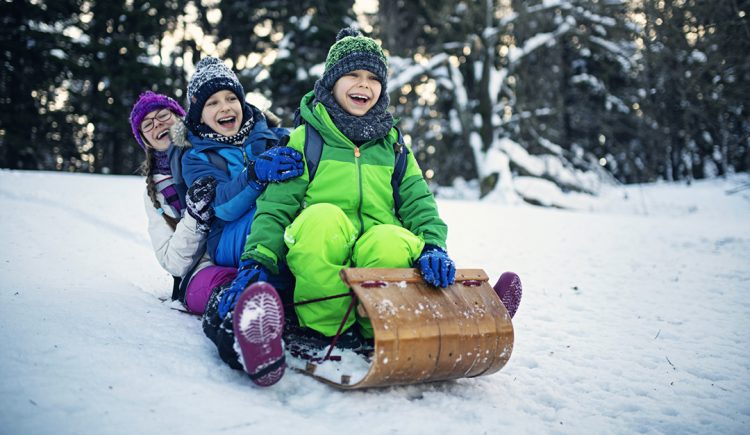(TNS)—Q: Is it okay for my child to play outside in cold weather? If so, how should I dress her?
A: Getting outside for play and exercise is important, especially now that many children aren’t in school for P.E. class or team sports. As temperatures plummet in many parts of the country, it’s natural to be concerned about whether it’s fine for them to go sledding or build a big snowman in the yard.
Your kids still can play outside when it’s cold as long as they are properly bundled up and you limit their time when temperatures drop below freezing. Keep in mind that wind chill is also a factor. If it’s dangerously cold out, it’s better for them to find indoor activities to stay entertained.
Children who are playing outside should take frequent breaks to come inside to warm up and stay hydrated.
Follow these tips when dressing your child for chilly weather:
– Dress babies and children warmly for outdoor activities. Start with two or three thin layers to keep them dry and warm. Avoid 100 percent cotton as a base layer because it absorbs sweat and holds it next to the skin. Always remember gloves or mittens, a hat, and warm waterproof boots. Down and down alternative or synthetic insulation jackets and snow pants insulate the body, and many of them provide warmth without bulkiness, making play easier.
– Wool or wool-blend socks are superior to cotton because wool wicks away sweat and keeps its insulation properties. Cotton soaks up sweat, loses its insulation, and can become sodden.
– The rule of thumb for older babies and young children is to dress them in one more layer of clothing than an adult would wear in the same conditions.
– When riding in the car on the way to an outdoor area, babies and children should wear thin, snug layers rather than thick, bulky coats or snowsuits to ensure car seat straps are tight enough. In an accident, puffy coats can flatten out and a baby could slip through and be thrown around the vehicle. Remove your child’s heavy coat before strapping him or her into a car seat or securing the seatbelt.
– If children will be playing outside with kids or adults from outside their household, don’t forget their mask or cloth face covering, especially if they are unable to stay at least 6 feet apart. Masks and cloth face coverings should never be worn by children under 2 years old. Keep in mind that if a child is sick (fever, cough, or other symptoms), he or she should not play with anyone outside of their own household.
When children are playing outside, keep an eye out for signs of hypothermia:
– Hypothermia develops when a child’s temperature falls below normal due to exposure to colder temperatures. It often happens when a child is playing outdoors in extremely cold weather without wearing proper clothing or when clothes get wet. It can occur more quickly in children than in adults.
– As hypothermia sets in, the child may shiver and become lethargic and clumsy. Speech may become slurred and body temperature will decline in more severe cases.
– If you suspect your child is hypothermic, call 911 at once. Until help arrives, take the child indoors, remove any wet clothing, and wrap him or her in blankets or warm clothes.
Frostbite is also a concern. Here’s what to know:
– Frostbite happens when the skin and outer tissues become frozen. This condition tends to happen on extremities like the fingers, toes, ears and nose. They may become pale, gray and blistered. At the same time, the child may complain that his or her skin burns or has become numb.
– If frostbite occurs, bring the child indoors and place the frostbitten parts of his or her body in warm (not hot) water. Warm washcloths may be applied to a frostbitten nose, ears and lips.
– Do not rub the frozen areas.
– After a few minutes, dry and cover the child with clothing or blankets. Give him or her something warm to drink.
– If the numbness continues for more than a few minutes, call your doctor.
Time outside is important for children for many reasons, including mental stimulation, exercise, and eye breaks from laptops and smartphones. It’s also good for parents, so get out there with them and get into an epic snowball fight!
Dr. Stephanie Griese is a general pediatrician with experience in urgent care, emergency medicine, and public health and is a clinical consultant for the Virginia Department of Health’s COVID-19 response. For more information, go to HealthyChildren.org, the website for parents from the AAP.
2021© Tribune Content Agency, LLC











